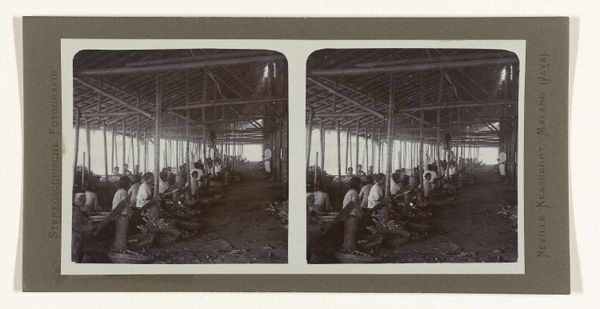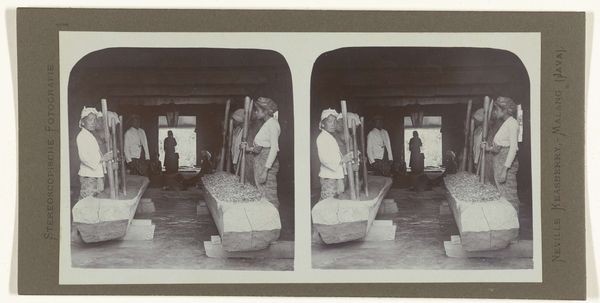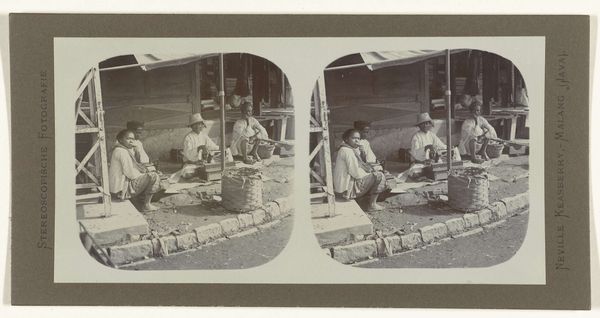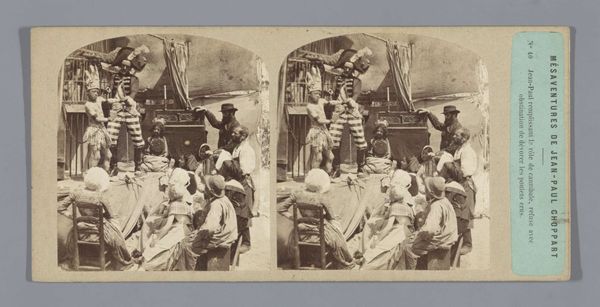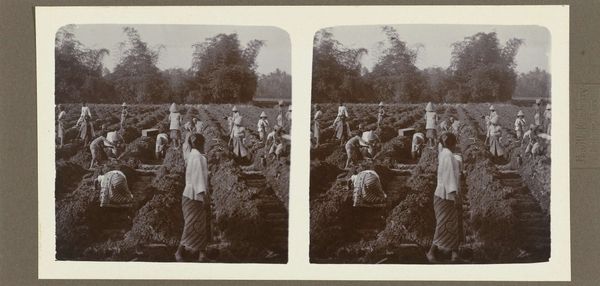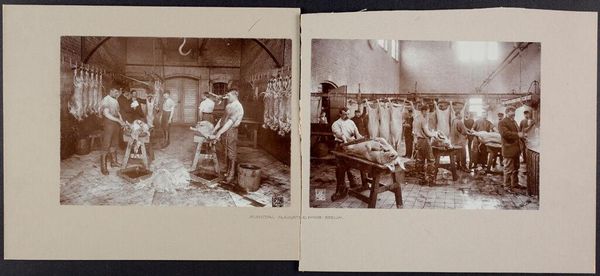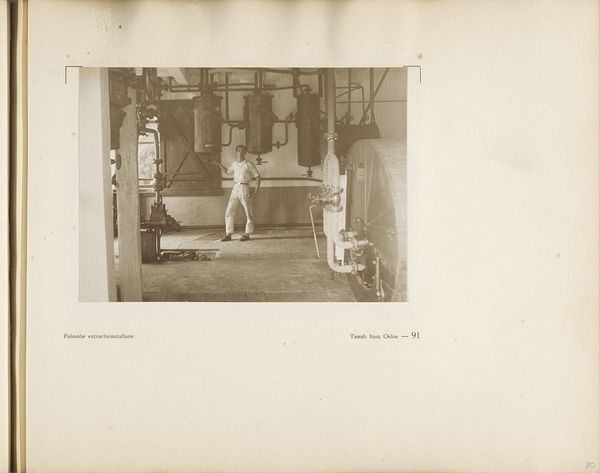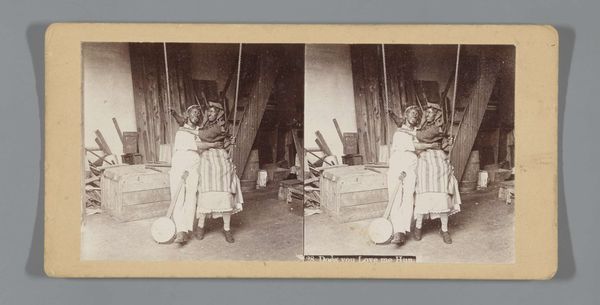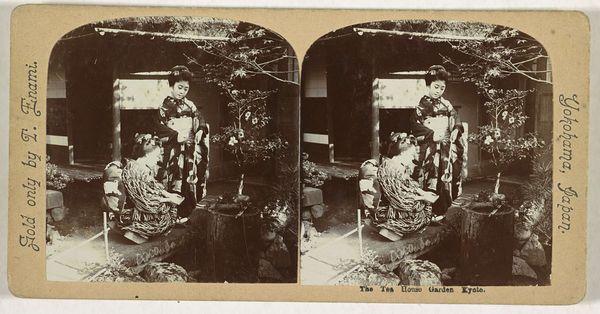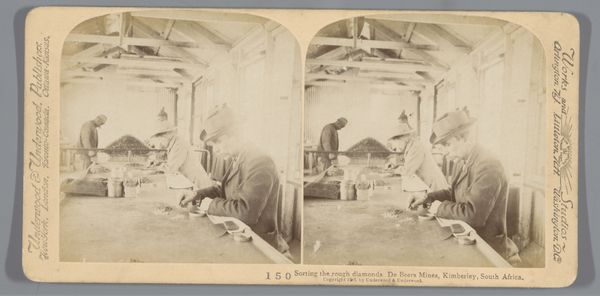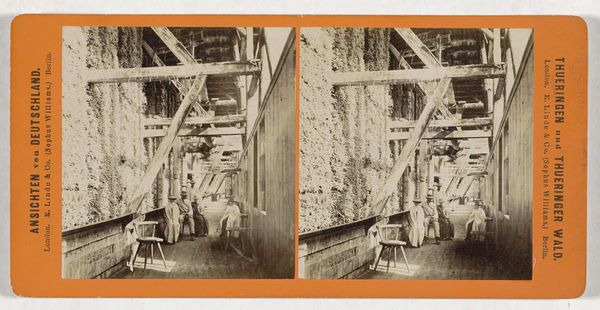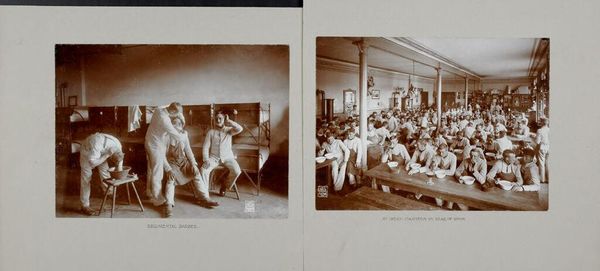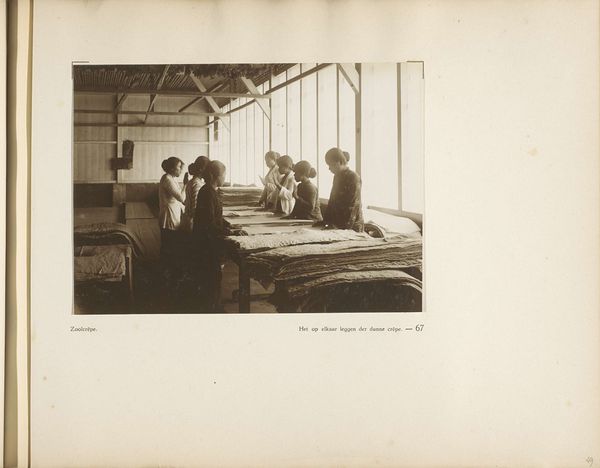
print, photography, gelatin-silver-print
#
portrait
# print
#
landscape
#
photography
#
gelatin-silver-print
#
genre-painting
#
realism
Dimensions: height 76 mm, width 152 mm
Copyright: Rijks Museum: Open Domain
Curator: Immediately, I’m struck by the repetition. It's almost dizzying. So many people bent over… and that silvery light, almost ghostly, reflecting off what looks like piles and piles of tobacco. Editor: And it is indeed piles of tobacco leaves we see here. This is a gelatin silver print entitled “Sorting the Picked Tobacco Leaves," created sometime between 1900 and 1935. Through the lens of Neville Keasberry, we witness an industry reliant on human labor. Curator: "Sorting", that's doing an awful lot of work for that title! But the simplicity is striking, like the calm before a storm, the lull before the global market machine swallows everything up. Look how vulnerable the workers are positioned here, under that imposing scaffold. It’s a brilliant composition, showing the architecture dominating the people… but the people make the photograph, and, by extension, the market what it is. Editor: The image invites us to consider how labor, particularly in colonial contexts, shapes both landscapes and lives. Consider the relationship between the workers, largely anonymous in the photograph, and the end consumer. How often do we consider these complex networks of production when indulging in everyday habits? Curator: Never, probably! The geometry, though! It makes me think of Foucault, and the concept of panopticism. Are these people really sorting tobacco, or are they performing a show of labor? I feel I'm complicit in viewing it... I can't look away. Editor: Exactly! We are positioned as overseers, which raises difficult questions about our own gaze. Think about the labor rights, consider gender, consider cultural extraction… Curator: All those layers hidden within those muted grays and browns! The leaves are arranged like offerings or sacrifices! And they probably were… given the circumstances. It hits you in the gut after a while... Doesn't it? Editor: It does. It is in viewing, questioning, and engaging with images like this, that we find our way to critical consciousness. Images from the past still hold a powerful presence in the present.
Comments
No comments
Be the first to comment and join the conversation on the ultimate creative platform.
